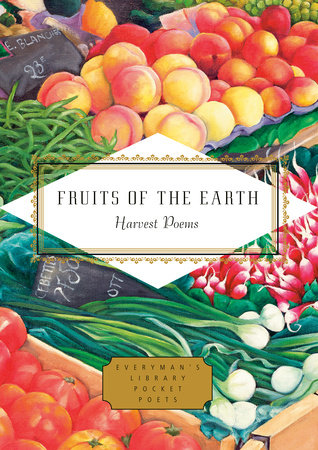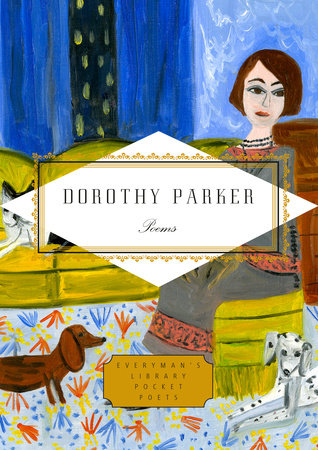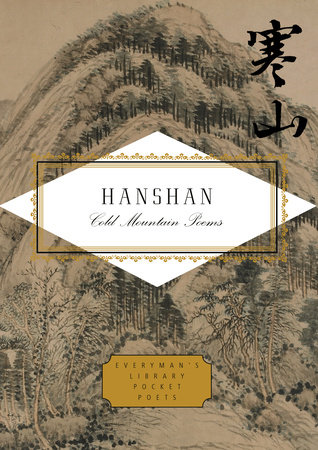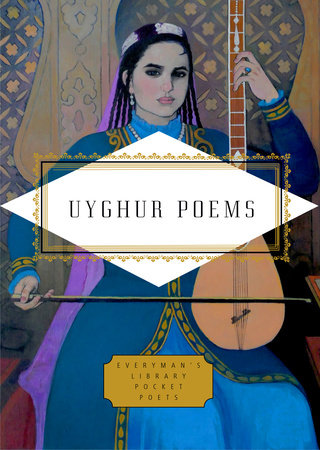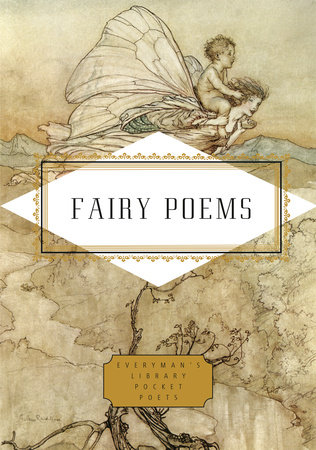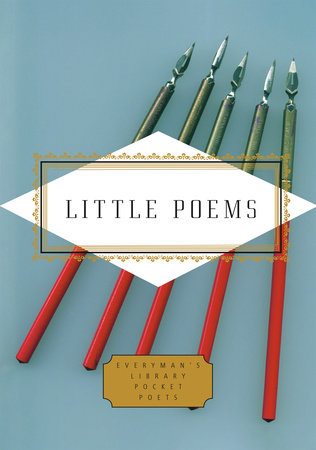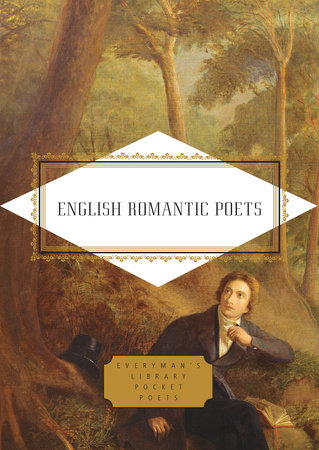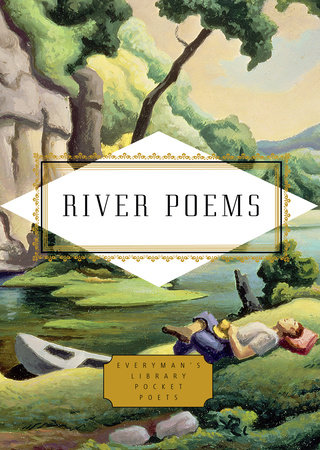Excerpt
German Romantic Poets
FOREWORD
The convention in scholarship is to see German Romanticism as starting in the 1790s, with the Schlegel brothers and their circle in Jena, and ending in the 1820s, part way through the career of the great poet Heinrich Heine. This anthology begins earlier and fi nishes later, thereby incorporating crucial influences – without which Romanticism cannot be properly understood – and giving an idea of the legacy of the movement. This is particularly helpful if we wish to develop a sense of the place of German poetry in the broader context of European Romanticism. Indeed, it is perhaps more accurate, though less elegant, to speak of Romanticisms. These flowered at different times. French literary Romanticism, for example, reached its high point a little later than German literary Romanticism. Romantic movements in the various artistic media also had their own trajectories: in Germany, the Romantic era in music peaked later than in literature, and extended as late as Wagner, Bruckner and Mahler. A more generous understanding of the boundaries of German literary Romanticism, therefore, also helps us to understand how developments in poetry relate to those in other art forms.
This collection opens with an excerpt from William and Helen, Sir Walter Scott’s translation of Lenore, a ballad by Gottfried August Bürger. Lenore was very influential in Britain and elsewhere, and it was also in some ways the source of the trend for ballads which the Romantics adopted, via Goethe. The Early Romantic circle from Jena is represented in the poetry of August Wilhelm and Friedrich Schlegel, Novalis, Ludwig Tieck and Sophie Mereau. The Schlegel brothers provided much of the theoretical impetus behind Early Romanticism, and August Wilhelm’s erudite contributions were particularly important for developments in the lyric. Also of that generation, and kindred to an extent in philosophical terms, was Friedrich Hölderlin, one of the most complex but most brilliant writers in the German language. Next come Clemens Brentano and Karoline von Günderrode. Günderrode was a rare philosophical and poetic talent, whose work is rooted in its time, yet also highly distinctive. Brentano was an especially gifted lyric poet, who was prolific on his own terms, and who also collaborated with Achim von Arnim to produce the famous folk collection Des Knaben Wunderhorn (extracts of which were later set to music by Gustav Mahler). The predilection for folkstyle poetry – which was often highly artful – goes back several decades to the infl uence of Johann Gottfried Herder, and before him, Thomas Percy in England. Goethe’s ‘Heidenröslein’ is a particularly famous example of this approach.
Joseph Freiherr von Eichendorff represents the peak of later Romantic poetry. He had become closely acquainted with Arnim and Brentano in Heidelberg, and ultimately took Romanticism in a very different direction from that envisioned by the Schlegel brothers. Several other poets of roughly Eichendorff’s generation, such as Adalbert von Chamisso, Justinus Kerner and Ludwig Uhland are also included: they were all popular in Germany and, very often, were beloved of Victorian translators too. Together with Eichendorff, Heinrich Heine is often considered the Romantic poet par excellence. From early in his career, however, his work is poised between admiration for and scepticism of the movement, and his critical distance becomes more marked later on. Although this selection is tipped towards the earlier part of his œuvre, the later, in some ways antiRomantic part is also represented. With Heine, we have reached the notional end of the Romantic period proper, and Eichendorff was plagued in his later years by the sense that he was becoming outmoded; yet plenty of writers, such as the Austrian poet Nikolaus Lenau, continued to compose in the Romantic idiom. Annette von DrosteHülshoff and Eduard Mörike are sometimes described as postRomantic poets, meaning that their poetry still bears the stamp of the Romantic era but, with their own innovations, they also ushered in a new era, even anticipating Modernism. With Richard Wagner, fi nally, the Romantic legacy gathered new momentum: Wagner, who wrote his own libretti, channeled the infl uence of literary Romanticism into his Gesamtkunstwerk (total art work), which moves Romantic opera into modern music.
Germany’s most famous writer and polymath, Johann Wolfgang Goethe, occupies a singular place in all this. There has been a tendency to see Goethe as distinct from the Romantics; for some, his approach was even antithetical to Romanticism. Something similar obtains for his great friend and collaborator, Friedrich Schiller. There are evident differences between their work and (say) that of the Schlegels. Yet there was signifi cant mutual infl uence, in particular between Goethe and the fi rst generation of Romantics, and both Goethe and Schiller shared many of the intellectual interests which drove Early Romanticism. Indeed, with his early preRomantic works such as ‘May Song’ (1771) and The Sorrows of Young Werther (1774), Goethe was a major catalyst for what was to come. Moreover, the second part of his Faust, which was written in old age and published posthumously in 1832, continues and further radicalizes ‘Romantic’ trends even after other major fi gures in the movement had died or moved on. In addition, of course, Goethe’s infl uence on Romantic music was crucial: his poetry makes up a signifi cant part of the corpus of Lieder (songs) by Schubert, Schumann and others. Readers may also recognize works in this collection by other poets – the Schlegel brothers, Uhland, Eichendorff, Friedrich Rückert, Heine and Wilhelm Müller – which have likewise been immortalized in music. Schiller, for his part, is perhaps best known for his works for the stage (many of which are also in verse, in iambic pentameter); but his poetry is just as striking for its combination of sculpted elegance and psychological intensity.
Various motifs and characters recur in this collection. The themes most commonly associated with Romantic poetry are love, death, night and nature – in particular the forests which to this day cover large areas of Germany. All these, accordingly, are prominent in this selection. In Eichendorff’s ‘Night of Moon’, nature mysticism fuses with Christian faith, and the themes of love and death merge memorably in the excerpts from the end of Act Two of Wagner’s Tristan and Isolde. Child mortality is a particularly poignant motif in the poetry of this period, and again, this is refl ected here in poems by Goethe (‘Erlkönig’), Uhland (‘On the Death of a Child’), Eichendorff (‘On the Death of My Child’), Rückert (‘Now the sun prepares to rise as brightly’) and Mörike (‘To an Aeolian Harp’). Certain characters are also passed from poet to poet. The most famous is Lorelei, a female enchantress associated with the 132 metrehigh rock of the same name on the right bank of the Rhine. An original invention of Brentano’s (‘Lore Lay’), she surfaces in many Romantic poems (see ‘Dialogue in the Forest’ by Eichendorff and ‘Lorelei’ by Heine in this collection), and became legend – indeed, her status in popular culture is such that it can come as a surprise to learn that she is a product of Romanticism rather than of more ancient folklore. This is an example of how convincing Romantic poets could be in their adoption of the ‘folk’ mode.
The formal range of German Romantic poetry is signifi cant. The most common, as will be clear from this collection, is the fourline strophe. This broad category includes (but is not confi ned to) the ballad, a narrative form. Examples in this collection include Goethe’s ‘Erlkönig’ and the various Lorelei poems. Some poets also wrote in freer or more idiosyncratic forms at points. In Novalis’s Hymns to Night, we even have examples of prose poetry: this cycle of six begins with rhythmed prose and lifts gradually into full verse. In addition, the Romantic period was a time of experimentation with historical forms, such as the elegiac couplet or distich, derived from Greek and Latin poetry and consisting of a hexameter line followed by a pentameter line. This was given particular impetus in the 1790s by Goethe and Schiller (see, for example, ‘Nenia’) and taken up by others, above all by Hölderlin, who became the supreme exponent of the elegy (see ‘Bread and Wine’). The boundaries between ‘Romanticism’ and ‘Classicism’ in German literature of this period are by no means as rigid as has often been claimed: the Schlegel brothers, for example, were enthusiastic about the revival of the classical elegy. An even bigger trend, however, was for the sonnet, spearheaded in the early 1800s by August Wilhelm Schlegel; a number of sonnets, accordingly, are given here. Finally, the collection includes two examples of the Persianstyle ghazal: ‘Closing Song’ (Rückert) and ‘Truest of Sages are You to Me’ (August von Platen). The ghazal form consists of couplets, all of which end with the same rhyme sound (AA, BA, CA, etc.). While Goethe’s Westöstlicher Divan (West Eastern Divan) remains the bestknown tribute to Persian poetry in German, other poets in fact went even deeper in their engagement with the language and its literary traditions. Both Rückert and Platen could read Persian fluently – Rückert, indeed, was Professor of Oriental Languages, as the discipline was then called – and both demonstrated considerable poetic skill in the many original ghazals that they composed.
The intricate rhymes and metres of the ghazal bring us to the difficulty of preserving form in translation. If the translator’s attention to form is too blinkered, the ‘argument’ of the poem will suffer. So might its sound, in fact: hackneyed rhymes and forced metres are probably worse than a verse translation which feels prosy. On the other hand, if a translation retains little or nothing of the poem’s original ‘shape’, the reader will have but a fraction of an impression of the source text. There is, of course, more to poetry than rhyme; but given that rhyme was an important resource for many Romantic poets, preference has been given in this collection to translations which preserve this feature. Relaxing the demands of form in favour of a subtle representation of content can also lead to impressive renderings, however, and this approach to translating poetry is represented here too. The collection has been determined partly by the translations that exist, and there is more available for some poets than for others; but the hope is that the work of the many great translators and scholars of German represented here will convey a vivid sense of what Romanticism was and is.
Some poems are taken from larger collections (notably Heine’s Book of Songs), but I have only included the titles of short cycles here (such as Novalis’s Hymns to Night), because these are more crucial to the understanding of a given poem. Titles have been given in both English and German to make it easier for readers to trace the original should they so wish.
I am grateful to Nicholas Boyle, John Guthrie, Peter Hutchinson and Joanna Raisbeck for their ideas for this selection, and to Roger Paulin for providing new translations of poems by August Wilhelm Schlegel, Ludwig Tieck and Eduard Mörike.
--CHARLOTTE LEE




